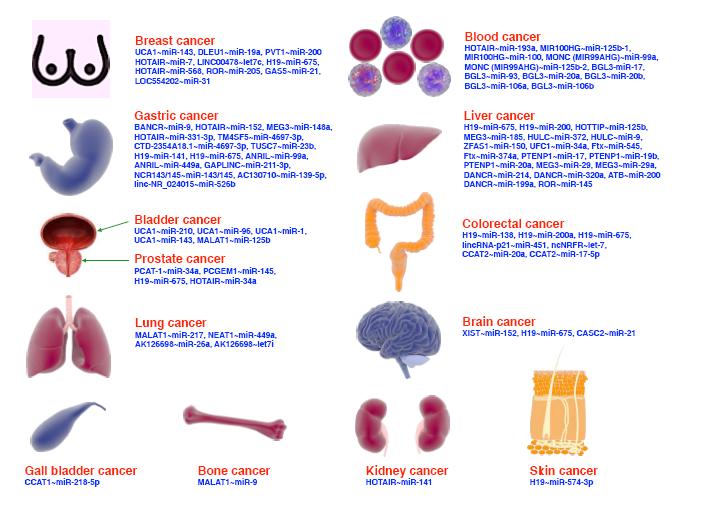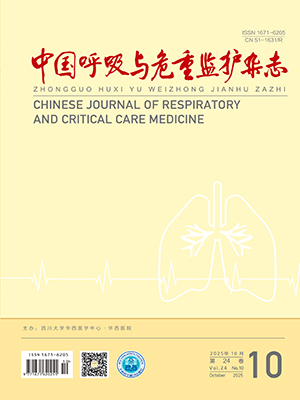| 1. |
Epstein LJ, Kristo D, Strollo PJ, et al. Clinical guideline for the evaluation, management and long-term care of obstructive sleep apnea in adults. J Clin Sleep Med, 2009, 5(3): 263-276.
|
| 2. |
Meliante PG, Zoccali F, Cascone F, et al. Molecular pathology, oxidative stress, and biomarkers in obstructive sleep apnea. Int J Mol Sci, 2023, 24(6).
|
| 3. |
Lv R, Liu X, Zhang Y, et al. Pathophysiological mechanisms and therapeutic approaches in obstructive sleep apnea syndrome. Signal Transduct Target Ther, 2023, 8(1): 218.
|
| 4. |
Senaratna CV, Perret JL, Lodge CJ, et al. Prevalence of obstructive sleep apnea in the general population: a systematic review. Sleep Med Rev, 2017, 34: 70-81.
|
| 5. |
Benjafield AV, Ayas NT, Eastwood PR, et al. Estimation of the global prevalence and burden of obstructive sleep apnoea: a literature-based analysis. Lancet Respir Med, 2019, 7(8): 687-698.
|
| 6. |
Hao L, Tian Q, Liu S, et al. Alterations of ocular surface parameters in patients with obstructive sleep apnea syndrome. Front Med (Lausanne), 2023, 10: 1220104.
|
| 7. |
Wong B, Fraser C L. Obstructive sleep apnea in neuro-ophthalmology. J Neuroophthalmol, 2019, 39(3): 370-379.
|
| 8. |
Yu BE, Cheung R, Hutnik C, et al. Prevalence of obstructive sleep apnea in glaucoma patients: a systematic review and meta-analysis. J Curr Glaucoma Pract, 2021, 15(3): 109-116.
|
| 9. |
Farahvash A, Micieli J A. Neuro-ophthalmological manifestations of obstructive sleep apnea: current perspectives. Eye Brain, 2020, 12: 61-71.
|
| 10. |
Li Y, Foo LL, Wong C W, et al. Pathologic myopia: advances in imaging and the potential role of artificial intelligence. Br J Ophthalmol, 2023, 107(5): 600-606.
|
| 11. |
Wang W, Guo X, Chen Y, et al. Choriocapillaris perfusion assessed using swept source optical coherence tomographic angiography and the severity of diabetic retinopathy. Br J Ophthalmol, 2023, 107(6): 836-841.
|
| 12. |
Yang D, Tang Z, Ran A, et al. Assessment of parafoveal diabetic macular ischemia on optical coherence tomography angiography images to predict diabetic retinal disease progression and visual acuity deterioration. JAMA Ophthalmol, 2023, 141(7): 641-649.
|
| 13. |
Fraser CL, Bliwise DL, Newman NJ, et al. A prospective photographic study of the ocular fundus in obstructive sleep apnea. J Neuroophthalmol, 2013, 33(3): 241-246.
|
| 14. |
Mohsenin A, Mohsenin V, Adelman RA. Retinal vascular tortuosity in obstructive sleep apnea. Clin Ophthalmol, 2013, 7: 787-792.
|
| 15. |
Tong JY, Golzan M, Georgevsky D, et al. Quantitative retinal vascular changes in obstructive sleep apnea. Am J Ophthalmol, 2017, 182: 72-80.
|
| 16. |
王小轶, 李猛, 丁秀, 等. 光学相干体层摄影血管成像技术在评估OSAS患者视网膜微血管改变中的应用. 中华医学杂志, 2017, 97(32): 2501-2505.
|
| 17. |
Ava S, Erdem S, Karahan M, et al. Evaluation of the effect of obstructive sleep apnea syndrome on retinal microvascularity by optical coherence tomography angiography. Photodiagnosis Photodyn Ther, 2022, 38: 102761.
|
| 18. |
Cai Y, Liu WB, Zhou M, et al. Diurnal changes of retinal microvascular circulation and RNFL thickness measured by optical coherence tomography angiography in patients with obstructive sleep apnea-hypopnea. Front Endocrinol (Lausanne), 2022, 13: 947586.
|
| 19. |
Liberati A, Altman DG, Tetzlaff J, et al. The PRISMA statement for reporting systematic reviews and meta-analyses of studies that evaluate healthcare interventions: explanation and elaboration. BMJ, 2009, 339: b2700.
|
| 20. |
Ma LL, Wang YY, Yang ZH, et al. Methodological quality (risk of bias) assessment tools for primary and secondary medical studies: what are they and which is better?. Mil Med Res, 2020, 7(1): 7.
|
| 21. |
Hernandez AV, Marti KM, Roman YM. Meta-Analysis. Chest, 2020, 158(1S): S97-S102.
|
| 22. |
吴晶晶, 黄翠婷, 张招德, 等. OCTA定量分析儿童阻塞性睡眠呼吸暂停综合征患者黄斑区微循环变化. 宁夏医科大学学报, 2024, 46(3): 255-258.
|
| 23. |
Abdolrahimzadeh S, Evangelisti M, Gattazzo I, et al. Oxidative stress and optical coherence tomography angiography evaluation of choriocapillaris and retinal vessel density in children with obstructive sleep apnea. Sleep Breath, 2024, 28(2): 639-646.
|
| 24. |
Karabulut M, Bek S, Karabulut S, et al. Effects of obstructive sleep apnea on retinal microvasculature. Int J Ophthalmol, 2023, 16(10): 1670-1675.
|
| 25. |
Lin PW, Lin HC, Chang CT, et al. Decreased peripapillary and macular vascular densities in patients with moderate/severe obstructive sleep apnea/hypopnea syndrome. Nat Sci Sleep, 2023, 15: 1-12.
|
| 26. |
Davanian A, Williamson L, Taylor C, et al. Optical coherence tomography angiography and Humphrey visual field in patients with obstructive sleep apnea. J Clin Sleep Med, 2022, 18(9): 2133-2142.
|
| 27. |
Tejero-Garcés G, Ascaso FJ, Casas P, et al. Assessment of the effectiveness of obstructive sleep apnea treatment using optical coherence tomography to evaluate retinal findings. J Clin Med, 2022, 11(3).
|
| 28. |
Loureiro T, Rodrigues-Barros S, Lopes D, et al. Retinal vascular impairment in patients newly diagnosed with obstructive sleep apnea syndrome. Multidiscip Respir Med, 2021, 16(1): 773.
|
| 29. |
Ye H, Jin C, Li X, et al. OCT-angiography comparison between obstructive sleep apnea children and normal subjects in china. Curr Eye Res, 2021, 46(3): 355-360.
|
| 30. |
Ucak T, Unver E. Alterations in parafoveal and optic disc vessel densities in patients with obstructive sleep apnea syndrome. J Ophthalmol, 2020, 2020: 4034382.
|
| 31. |
Moyal L, Blumen-Ohana E, Blumen M, et al. Parafoveal and optic disc vessel density in patients with obstructive sleep apnea syndrome: an optical coherence tomography angiography study. Graefes Arch Clin Exp Ophthalmol, 2018, 256(7): 1235-1243.
|
| 32. |
Yu J, Xiao K, Huang J, et al. Reduced retinal vessel density in obstructive sleep apnea syndrome patients: an optical coherence tomography angiography study. Invest Ophthalmol Vis Sci, 2017, 58(9): 3506-3512.
|
| 33. |
von Kanel R, Dimsdale JE. Hemostatic alterations in patients with obstructive sleep apnea and the implications for cardiovascular disease. Chest, 2003, 124(5): 1956-1967.
|
| 34. |
Delaey C, Van De Voorde J. Regulatory mechanisms in the retinal and choroidal circulation. Ophthalmic Res, 2000, 32(6): 249-256.
|
| 35. |
Papst N, Demant E, Niemeyer G. Changes in pO2 induce retinal autoregulation in vitro. Graefes Arch Clin Exp Ophthalmol, 1982, 219(1): 6-10.
|
| 36. |
Wang Y, Yu X, Liu Z, et al. Influence of hypobaric hypoxic conditions on ocular structure and biological function at high attitudes: a narrative review. Front Neurosci, 2023, 17: 1149664.
|
| 37. |
Woo JM, Yoon YS, Woo JE, et al. Foveal avascular zone area changes analyzed using OCT angiography after successful rhegmatogenous retinal detachment repair. Curr Eye Res, 2018, 43(5): 674-678.
|
| 38. |
Snodderly DM, Weinhaus RS, Choi JC. Neural-vascular relationships in central retina of macaque monkeys (Macaca fascicularis). J Neurosci, 1992, 12(4): 1169-1193.
|
| 39. |
Adhi M, Filho MA, Louzada RN, et al. Retinal capillary network and foveal avascular zone in eyes with vein occlusion and fellow eyes analyzed with optical coherence tomography angiography. Invest Ophthalmol Vis Sci, 2016, 57(9): OCT486-OCT494.
|
| 40. |
Nakahara T, Hoshino M, Hoshino S, et al. Structural and functional changes in retinal vasculature induced by retinal ischemia-reperfusion in rats. Exp Eye Res, 2015, 135: 134-145.
|
| 41. |
方媛媛, 岳爽, 罗苗, 等. 阻塞性睡眠呼吸暂停患者的视网膜神经纤维层厚度变化: meta分析. 国际呼吸杂志, 2022, 42(9): 699-708.
|




